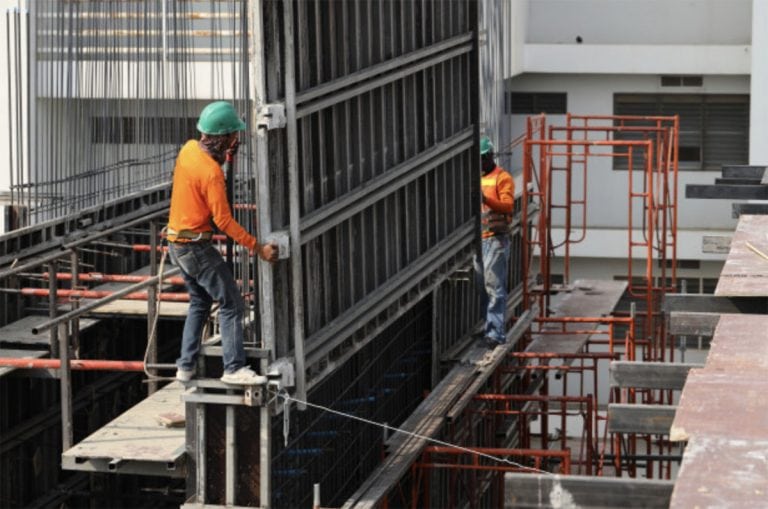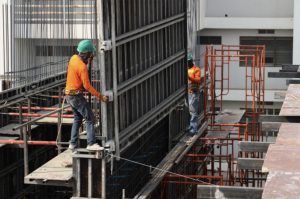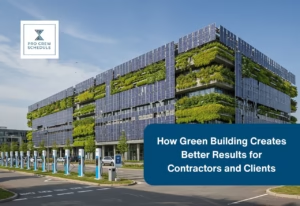Green and sustainable – these have become the main objectives of most construction projects being made today. And why not when they offer a lot of benefits not just to the environment but to the building owner and occupants too.
When we hear of sustainability, the first context that comes to mind is that of the environment. But since the EIA (U.S. Energy Information Administration) reports that almost 50% of CO2 is emitted by buildings, it’s about time sustainability is spoken widely also in the context of architecture.
As found by an MIT study, sustainable design has now become standard practice in many countries. In fact, we’ve previously listed some of the greatest green buildings made in the African continent.
In addition to issues related to energy, there are many other aspects, such as a healthy environment and other aspects of indoor environmental quality, which are relevant for a “truly sustainable” building.
Architecture and Sustainability Factors
Architecture presents a unique challenge in the field of sustainability. Construction projects typically consume large amounts of materials, produce tons of waste, and often involve weighing the preservation of buildings that have historical significance against the desire for the development of newer, more modern designs. We previously discussed tips on how to minimize construction waste and if you noticed in that blog, most arguments point out using sustainable construction development to minimize waste.
Sustainable construction is defined as “the creation and responsible management of a healthy built environment based on resource-efficient and ecological principles.” Sustainably designed buildings aim to lessen their impact on our environment through energy and resource efficiency.
Sustainability includes the following principles:
- Minimizing the consumption of non-renewable resources
- Enhancing the natural environment where the building is situated
- Eliminating or minimizing the use of toxic materials in building construction as well as its operation
Sustainable building, on the other hand, can be defined as those buildings that have minimum adverse impacts on the built and natural environment. And these are in terms of the building themselves, their immediate surroundings and the broader regional and global setting. Thus, the rational use of natural resources and appropriate management of the building stock will contribute to saving scarce resources, reducing energy consumption and improving environmental quality.
Sustainable buildings should:
- Have a system for harvesting their own water and energy needs whether it’s during the construction process or when the buildings are already open for occupancy.
- Be adapted specifically to site climate and evolve as conditions change.
- Operate with zero pollution and generate zero to minimal waste that isn’t useful for some other process in the building or immediate environment (recycling systems).
- Promote the health and well-being of all occupants.
- It should be integrated with energy-efficient systems that maximize living efficiency and comfort.
- Improve the health and diversity of the local ecosystem rather than degrade it.
With all those said, sustainable design should focus on the thoughtful integration of architecture with electrical, mechanical, and structural engineering. In addition to concern for the tradition; aesthetics of massing, proportion, scale, texture. Shadow and light, the facility design team needs to be concerned with long term costs: environmental, economic and human. All in all sustainable design is more of a philosophy of a building than perspective building style.
Benefits of Green and Sustainable Buildings
The benefits of green buildings can be grouped into three categories: environmental, economic and social. Here, we looked into a range of facts and statistics from various third-party sources that present all these benefits.
Environmental
One of the most important types of benefit green buildings offer is to our climate and the natural environment. Green buildings can not only reduce or eliminate negative impacts on the environment, by using less water, energy or natural resources, but they can, in many cases, have a positive impact on the environment (at the building or city scales) by generating their own energy or increasing biodiversity.
At a global level:
- From UNEP 2009 report, it was mentioned that the building sector has the largest potential for significantly reducing greenhouse gas emissions compared to other major emitting sectors.
- Again pointed out by UNEP, 2016 report, the emissions savings potential is said to be as much as 84 gigatonnes of CO2 (GtCO2) by 2050, through direct measures in buildings such as energy efficiency, fuel switching and the use of renewable energy.
- Finally, in the UNEP 2016 report, the building sector has the potential to make energy savings of 50% or more in 2050, in support of limiting global temperature rise to 2°C, which is above the pre-industrial levels.
At a building level:
- Australia awards the Green Star certification to Green buildings that have been shown to produce 62% fewer greenhouse gas emissions than average Australian buildings, and 51% less potable water than if they had been built to meet minimum industry requirements.
- Green buildings certified by the Indian Green Building Council (IGBC) results in energy savings of 40 – 50% and water savings of 20 – 30% compared to conventional buildings in India.
- Green buildings achieving the Green Star certification in South Africa have been shown to save on average between 30 – 40% energy and carbon emissions every year, and between 20 – 30% potable water every year, when compared to the industry norm.
- Green buildings achieving the LEED certification in the US and other countries have been shown to consume 25 percent less energy and 11 percent less water, than non-green buildings.
Economic
Another benefit that green and sustainable buildings offer is related to economic or financial graces. These benefits are relevant to a range of different people or groups of people. These include cost savings on utility bills for tenants or households through energy and water efficiency; lower construction costs and higher property value for building developers; increased occupancy rates or operating costs for building owners; and job creation.
At a global level:
- According to the European Commission, 2015 report Global energy efficiency measures could save an estimated €280 to €410 billion in savings on energy spending. This is equivalent to almost double the annual electricity consumption of the United States.
At a country level:
- According to the Canada Green Building Council / The Delphi Group, the 2016 report, Canada’s green building industry generated $23.45 billion in GDP and represented nearly 300,000 full-time jobs in 2014.
- The US Green Building Council / Booz Allen Hamilton, 2015 report mentioned that green and sustainable construction is projected to account for more than 3.3 million U.S. jobs by 2018.
At a building level:
- The Dodge Data & Analytics, 2016 report said that building owners report that green buildings, whether new or renovated, command a 7 percent increase in asset value over traditional buildings.
Social
Finally, green building benefits go beyond economics and the environment and have been shown to bring positive social impacts too. Many of these benefits are around the health and wellbeing of people who work in green offices or live in green homes.
- The Harvard T.H. Chan School of Public Health / Syracuse University Center of Excellence / SUNY Upstate Medical School, 2015 report said that the workers in green, well-ventilated offices record a 101 percent increase in cognitive scores (brain function).
- According to the American Academy of Sleep Medicine, 2013 report, employees in offices with windows slept an average of 46 minutes more per night.
- A research by Park and Yoon in 2011 suggests that better indoor air quality with low concentrations of CO2 and pollutants, and high ventilation rates can lead to improvements in the performance of up to 8 percent.
Final Words
Indeed, there are tons of benefits that green and sustainable building construction development brings to the environment, the world, and society. It doesn’t only support a good environment but happier and more productive lives too.
So if you are in the construction industry, start considering green and sustainable construction and win more projects in the future.





